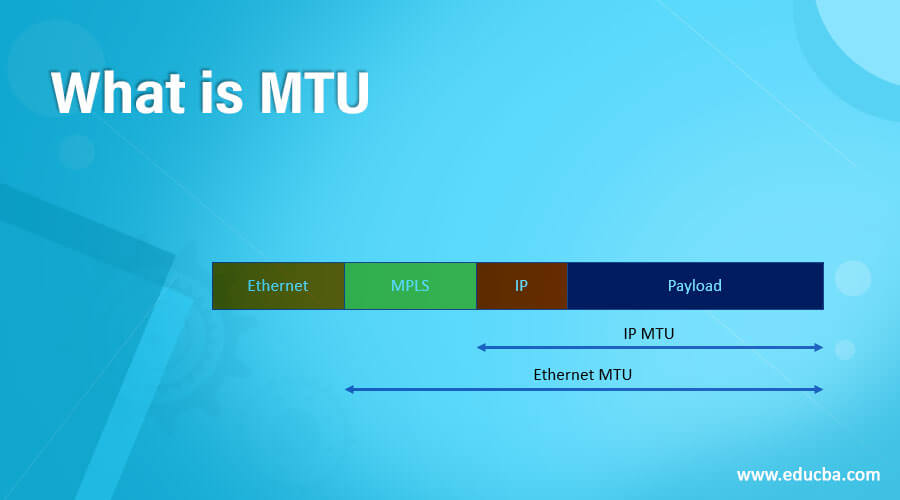Updated March 29, 2023

Introduction to MTU
For networking, the MTU (maximum transmission unit) is an indicator that reflects the largest packet of data acknowledged by a networked system. For example, imagine that the cars and trucks reaching the height limit are not able to reach a height limit for highway passages or tunnels, much as packets that surpass the MTU of a network can not pass through this network. But data packets that surpass MTU are broken down into smaller parts to fit through instead of cars and trucks. This process is referred to as fragmentation when they reach their destination, broken packets are reassembled.
Working of MTU
Suppose that the MTU size (TCP) was defined by the Internet Transference Control Protocol(TCP) = 350 B is the maximum data unit size of the protocol that can be given for distribution. The following cases can occur in such a scenario: In this case, if the system sends packets larger than that of MTU, packet size > 350 B, the system packet is broken into smaller packets to ensure the biggest size of the packet is not exceeded. The process of breaking a large data packet into smaller pieces of data so that neither piece reaches the maximum frame size is called Fragmentation. These are later reassembled at the final client destination. In MTU sizes, the system sends packets in the network connection as a single frame. However, packets much smaller than MTU could lead to delays and inefficiency of the network. In such a case, it is not appropriate to reassemble packets. If the system sends packets in the MTU size, they are transmitted in the network connection as a single frame. Packages much smaller than MTU can, however, lead to delay and network failure. In such a case, it is not required to reassemble packets.
What is a packet?
All information transmitted via the Internet is divided into smaller pieces called packets. For instance, when a webpage is sent from a web server to a laptop user, a series of packets travel the component data of the webpage over the internet. The packets are then placed on the laptop on the original website. There are two main parts for data packets, namely the header and the payload. The header contains information about the packet’s source and destination addresses, while the payload is the actual contents of the packet. Think of the header and the payload as the contents of the package as a shipping label. (Unlike packets, packets on the web have multiple networking protocol headers attached.)
How does fragmentation work?
The size of every IP packet received by all network routes will be checked against the MTU of the next router receiving the packet. The first Router will split the payload into two or three packets with its own headers when the packet reaches the MTU for the next router. Of new packet has a copied header (to include the source and destination IP addresses, etc.) from the original packet with a number of major modifications in each packet. In addition, the router edits some fields in the IP header so that the packets are scattered and need to be re-assembled, how many packets remain, and how many packets are sent.
Imagine a shipping company is carrying a shipment that reaches the weight requirements of one of their warehouses. The shipping company splits the contents of the box into three smaller packets rather than denying the package delivery. It also duplicates the shipping label for each package and adds a note implying that each package is one component of a sequence that must arrive together — the first package is 1 of 3, the second is 2 of 3, etc. (Such an approach by a shipping firm would be a breach of privacy, so it does not occur in the real world.)
What is MSS?
Maximum segment size stands for MSS. TCP, the transport layer, instead of layer 3, is used for MSS in the layer 4 of the internet. Only the payload size in each packet is concerned for MSS. The length of the TCP and IP headers from MTU is determined by subtracting it.
What is the path of MTU discovery?
Path MTU discovery, or PMTUD, is the method of discovering the MTU of all computers, routers, and switches on a network path. For example, if Computer A and Server A were using PMTUD, the MTU requirements of the Router B would be identified and the packet size adjusted in line to ensure fragmentation would not be achieved.
Recommended Articles
This is a guide to What is MTU. Here we discuss How does fragmentation work along with the Working of MTU and What is a packet; we hope you will find this article helpful. You may also have a look at the following articles to learn more –
